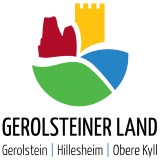Unterburg Lissingen
Gerolstein
A former moated castle on the Kyll
Lissingen Castle is located in Lissingen near Gerolstein in the district of Vulkaneifel in Rhineland-Palatinate and was built around 900 to 1280 A.D. The castle fascinates with its architectural styles from Gothic to Renaissance and Baroque. The double castle was divided into an upper and a lower castle in 1559. Due to the Kyll river near the estate and several moats, it was originally a real moated castle. It is also remarkable that there are only a few castles in the Eifel that have never been destroyed, and Lissingen Castle is one of them.
The upper and lower castles of Lissingen each include various residential and farm buildings, courtyards and outdoor areas.
Lissingen Lower Castle
The Lower Castle complex includes the Renaissance manor house, the castle courtyard, several farm buildings, barns, stables and the castle mill, where grain used to be ground. Today, the mill houses a restaurant and the court bakery. The cock store, large barn and coach house are used as a museum.
The lord of the castle is the historian Günter Lipperson, who is extensively restoring the lower castle and thus preserving it for posterity.
No guided tours can currently be offered due to renovation work.
Contact: Günter Lipperson, Tel.: 02644 5649426, Email: kontakt@unterburg-lissingen.de
Further information at: www.unterburg-lissingen.de
Unterburg Lissingen, Prümer Straße 1, 54568 Gerolstein-Lissingen












